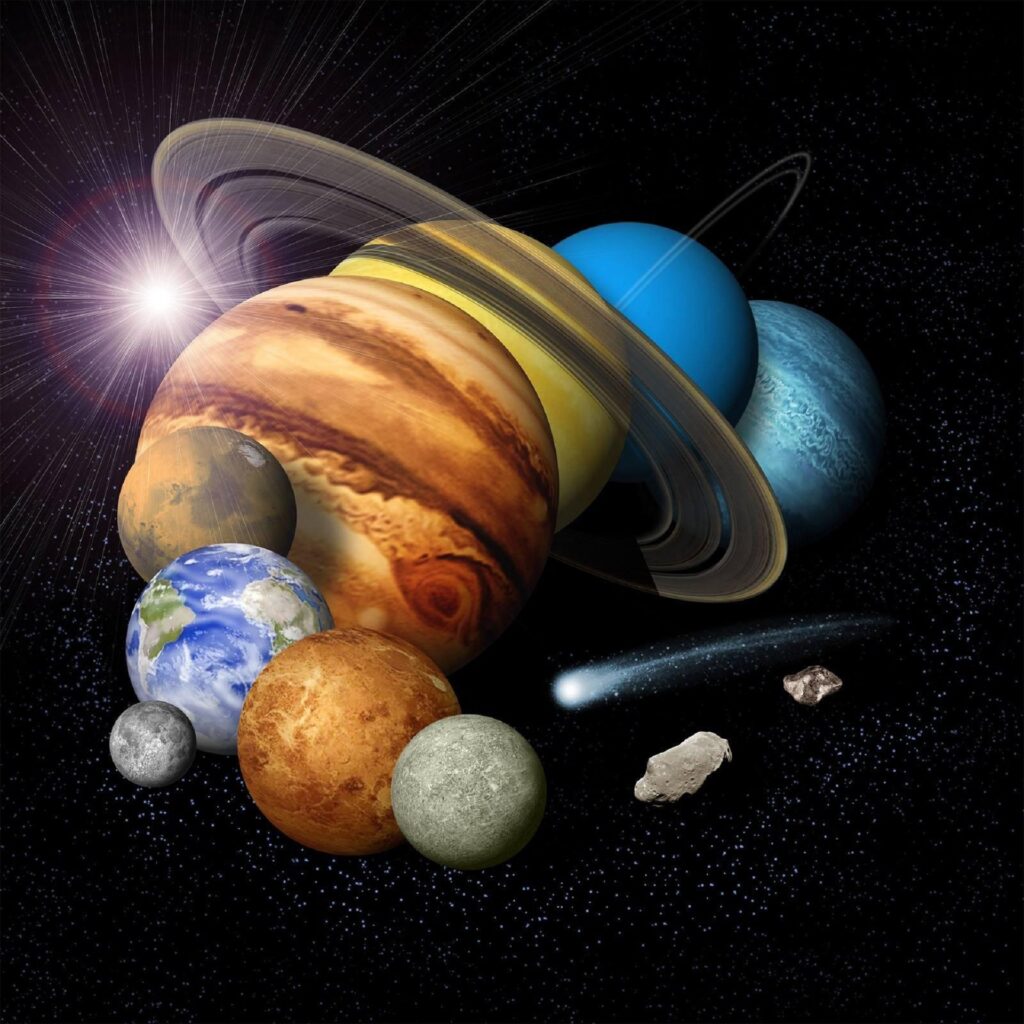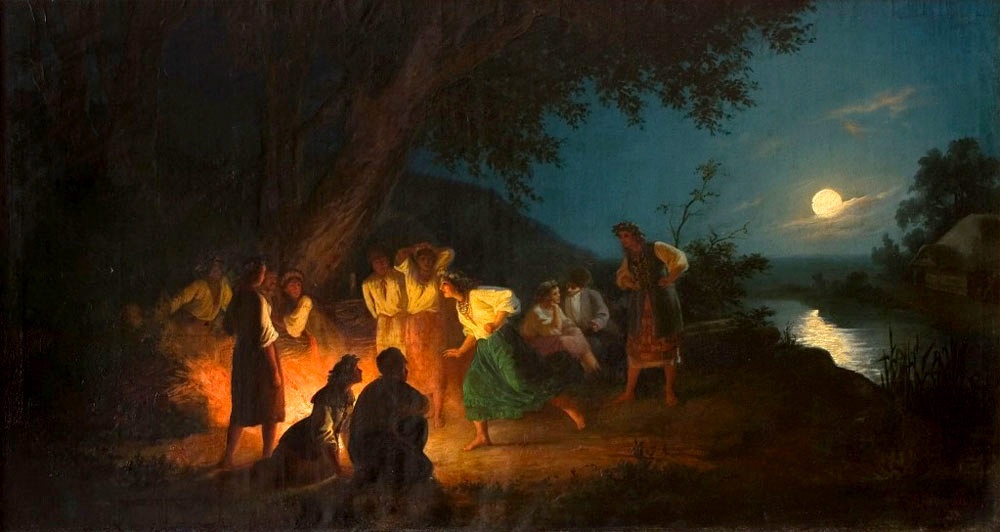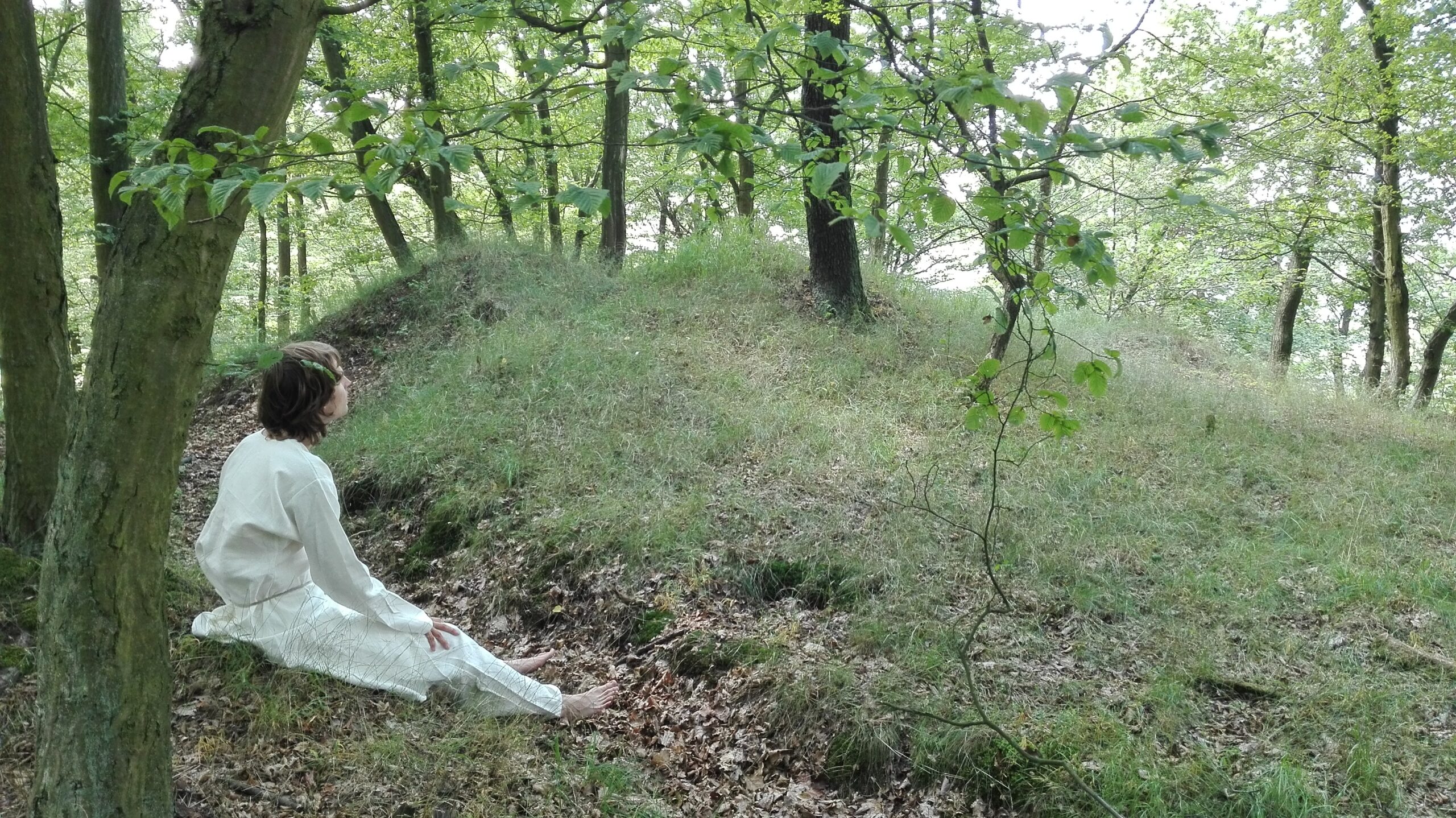Philosophy
In the header picture, you can see the remnants of a hillfort called “Propadený zámek” in the Forest of Crooked Logs, overlooking the Misty River. The hillfort was used by Bronze Age people, Celts and later by medieval (Baltoslavic) Czechs.
Coding, nature and European paganism, most beautifully manifested in ancient Greek philosophy and technology, are closely connected. Let me briefly explain why in a slightly poetic way.
It all began with triskelions, three quarks bounded by gluons in the particles we call protons and neutrons. There were countless single or double triskelions, until they began to cluster, multiplying their mass and thus under such pressure, temperature started to rise. They were shining all over the visible universe as stars, in which they fused. From two single triskelions, cores of hydrogen, helium appeared, then beryllium, carbon, oxygen, nitrogen, magnesium, calcium and most of other elements important for later life. That life, which by utilizing the Earth’s water, the Sun’s shining heat, elements from rocks and internal fire creates the soil and mild atmosfere, thus a beautiful and stable environment. The Earth should have been rocky and hot like Mercury, Venus and Mars, formed from the heavier elements. It is only partly so, because there is also enough water and gas like on Jupiter, Saturnus, Uranus and Neptune, probably thanks to Earth’s own internal nature and watery asteroids redirected to it by Jupiter. Here really fire and water become one.

Ancient European tales mention the beginning of the known world through fire and water, with their most illustrative manifestation expressed during the ceremonies of summer solstice. Looking at the seasonal changes of forests, the constant flow of rivers and changing tides of the sea, the ancient Greek philosophers further developed the ideas of transformation through elements. It did happen on the island of Miletus, the center of reasoning previously unknown, where Thales, Anaximander and Anaximenes came from. Together with Heraclitus, who is the author of the thought that you cannot step to the same river twice, focused on the idea of transformations, elements and even the origin of men through water. Each of these philosophers focused primarily on one of natural elements, but it was the mind of their pupil Leucippus, where the idea of atoms forming these elements originated.
Greek atomists, according to later Roman poet Lucretius, had used the same reasoning as the evidence for atoms as Albert Einstein later did mathematically. It involved noticing the Brownian motion of dust in sunrays, that must have been caused by much smaller, indivisible particles, otherwise the motion would not be possible. Leucippus teached Demokritos, the most famous atomist, that also emphasized the moral side of the acknowledgment of atoms: be happy, observe nature and do not be afraid of supernatural forces. Demokritos was very productive in writing books, but they were unfortunately later lost to the fanaticism expressed by neoplatonism and Christianity.
These Presocratic philosophers lost their popularity to Socratic teleology, that taught about everything in the Universe having a purpose, with Plato being the most famous teleological philosopher. However, there was one school that further developed atomism and its morality. It was Epicurus of Samos, who built his Garden in Athens and there taught his fellow philosophers of modesty, seeking necessary pleasures, while avoiding the painful ones and suffering in general. He was misunderstood by his critics dwelling on teleology, even though it was him who discovered the swirling of atoms, or the electromagnetic force as we call it today and that stands behind our technological advance. Epicurus was later followed by the Roman poet Lucretius, whose De Rerum Natura describes the teachings of atomists that are both striking and surprising to every scientist today. The famous Roman poets, Virgil and Ovid, both referred to Lucretius. Ovid also borrowed the poetic description of Epicurus to his description of Pythagoras in the beautiful books of Metamorphoses. Ovid is also the author of Fasti, a description of pagan annual festivities and gods associated with them.

 The same natural meander of “Rakovnický potok” water stream during the winter and the summer. Thanks to its winding path, the water may stay in the country, soaked in the floodplain, and be released once there is drought.
The same natural meander of “Rakovnický potok” water stream during the winter and the summer. Thanks to its winding path, the water may stay in the country, soaked in the floodplain, and be released once there is drought.
We will get back to some of the annual festivities, or the wheel of the year as it is known today, but first let us get back to the swirling of atoms, that according to Epicurus and Lucretius stands behind free will. The power to decide, to think and act would be impossible without chemical and electrical impulses. They carry information that needs to be stored, evaluated, analyzed and some response needs to be triggered. In our mammal, bird and reptile world the centralized brain, that processes information and controls the body, is quite developed. And in our primate family, its rapid development was not due to solving mathematical issues, but the social ones, that gave us an advantage from the evolutionary perspective. Our brain is much more efficient at solving social issues and predicting results of social behavior, which was proven when a mathematical task was transformed to a social one. Thus our brain tends to see social relations all around in the environment, even though there may be actually none. To put it simply, from the view of our brains everything is humanized. That is how the idea of gods, spirits and beasts originated.
Especially the stories about evil creatures living in swamps or the vengeful spirits of the dead have a very clear evolutionary explanation, because they helped our ancestors to avoid places with malaria such as swamps or sickness coming from decaying bodies. Thus the people, whose brain was able to vividly imagine such stories, were more likely to pass their genes to coming generations. Our mind evolved to approximate social relations, and our idea of free will always involves them. It is, however, not very able to imagine distant pasts or futures, where there is nothing human-like, nothing social. That is why the ancient stories tell about the beginning of the universe to be around thousands of years in the past, because the idea of evolution though millions and billions of years is very hard for us to even think about.
The remnants of European folk customs, hints in fairy tales and books especially from the Greek and Roman era point to a very similar shared story about the origin of the universe. First there was chaos, an unlimited number of possibilities, from which Eros, the attractive force, came forth and started to bring the elements together. From fire and water, the Earth, the sky, the sun, the moon, the wind, the stars, and the forests and water streams came into being, represented by god-like characters. We now know that the “chaos” lies all around in the quantum fields of subatomic particles, with its superposition, collapses of wave functions, probabilities, hidden symmetries and maybe strings and loops. The development of their relations bring about atoms, molecules, and thus chaotic systems from the mathematical perspective, such as the Earth’s climate or the development of galactical solar systems. Without the attractive gravitational force, there would be no stars, no pressure and temperature sufficient enough to bring about other atoms, other elements than the original hydrogen and helium. Without the attractive force, there would be no planets like the one of ours.

European stories often describe the world tree, usually an oak, connecting all parts of the known world. Then there are apple trees with golden apples bringing immortality or the first people coming from the oak and lime (on the picture) trees. Ovid’s story of Baucis and Philemon describes, how the two people bounded by love were transformed to the masculine oak and the feminine lime tree again by grateful gods.
Imagine a rock forming a small hill. It is the night. The water stream below flows through the valley covered with the ancient forest, so it could reach the sparkling surface of the Misty River. Close to the center of the Forest of Crooked Logs, on a rock where the castle of Křivoklát will once be built, there stands a girl in white dress, with brown hair flowing in the early summer air. She is looking at wooden statues of gods. Around the statue of the Mighty Lord, the fair rider on a white horse, there stand eight more in a circle like the rays around the sun reaching the cardinal directions. When the summer solstice slowly approaches, the first two statues come into the foreground, one of them is the Flower Maiden, the Lady of the Dawn, Spring and the Morning Star, known from ancient fairy tales. As the wife of the Mighty she protects the east, accompanied by her twin sons and a beautiful daughter, the one engaged to the Moon. The other statue represents the fertile Lady of the Earth, Mother Earth heading toward the west. When we turn around toward the south, back to the handsome Mighty Lord, we see the Lord of Thunder together with the Lord of Truth, also known as the King of Time from the fairy tales or the ruler of the daylight sky. During equinoxes, they make sure the world is in order. Behind them there are brothers of the Mighty, one of them is silvery like the Moon, the other one is windy, who chases the clouds like sheep in the sky. Then, when we look to the edge of the rock, we see the ruler of the forests, of the green underworld realm, the hunter, the Black-haired one together with the Lady of Death, as they close the eternal cycle of life during the winter solstice, the life that begins with the new year’s sun light and that constantly transforms.
The girl breathes and takes a look at the Mighty one again, who guided her to this place known as Křivoklát, where she had once been born. The Mighty took the appearance of a stag with golden antlers, he was helping her in all crafts she was learning during her travels, the stories about him were the greatest inspiration. This is the Baltoslavic, ancient Celtic, Italic, German, Greek and other pagan European world. Those are stories that utilize our need to see social relations all around us. Some things are outdated, but still there is a wisdom that comes with every good literature and poetry, which connects us to the countryside we live in, like the folk tales. Their main purpose should not be to slow us down, but to inspire us in what we do. The same applies to rituals. From the idea of chaos to the idea of nature gods, it is all our heritage and inspiration.
 The center of hollyhock flowers resembles the morning star.
The center of hollyhock flowers resembles the morning star.
It is important to note that atomists and their teachers, the Presocratics, found out one essential thing about our world. Their discovery was that the natural world as well as our cultures originated from the bottom, that is from the smallest particles and simple explanations into more complex structures, such as stars, life, or our societies. Lucretius seemed to emphasize this fact and that is also why he, the atomists and the Presocratics are being cited by modern scholars as the first pioneers in the area of later Darwinian evolution. Most other cultures and societies thought the universe was at least partly designed by a being already having a culture and a moral code, that it tried to enforce on every part of the world including the natural processes.
There is an interesting story mentioned by the Greek philosopher and the author of the first sci-fi book, Lucian. He, as the admirer of Epicureans and atomists, was against all kinds of quackery and cheating, and had been writing satire especially against the sects from the Near East and the esoteric confusion among nobility and people referring to Plato. Once he was successfully trying to convict the false prophet Alexander of Abonoteichus, who was destroying the books of atomists, because they, unlike followers of Plato’s or Pythagoras’s ideas, were laughing at Alexander’s alleged snake god. Since Lucian proved he was a cheater, Alexander tried to kill him, but luckily did not succeed. The story is important from two points. First, it shows how people, as social beings, tend to believe frauds, just because of the feeling of social belonging and having an alleged social relation with the environment, here expressed through the oracle and the snake god. We are genetically programmed to this kind of social behavior. And secondly, the story shows how two different worldviews, the atomism and the oracle, originated from the same original European tradition and storytelling.
We tend to imagine gods, fair maidens or water, forest, tree nymphs in a quasi-medieval style with swords and long dresses, surrounded by a beautiful natural environment. This is definitely a nice way of connecting ourselves to our history and non-urbanized, more of an original agricultural landscape we come from. However, it should not block us from imagining those characters in our daily lives, helping us with such advanced topics such as computers, artificial intelligence and so on. These story individuals are really just a connection our social mind makes with the environment around us and thus utilizes its full potential to provide us with inspiration. Stories are an essential part of our mind’s development, without them, we would not notice nor be able to classify some phenomena around us. Many originally pagan terms found their usage in the era of computers, including daemons running Cron, the serpent Python as a programming language etc. Our minds are then able to relate to those terms, remember them and their potential usage better.
 Summer solstice celebration, pained by Henryk Hektor Siemiradzki (24. 10. 1843 – 23. 8. 1902).
Summer solstice celebration, pained by Henryk Hektor Siemiradzki (24. 10. 1843 – 23. 8. 1902).
The month of June is one of the most rainy months in Central Europe. In the past, during the summer solstice, people would gather around the river to bathe, while going up a hill to light a high fire using two types of wood, resembling both a woman and a man, or a goddess and a god. They were wearing wreaths of flowers such as St. John’s wort to support fertility and jumping over fires for symbolic cleansing. The late spring is the most beautiful time of the year here and it ends with the summer solstice. The blossoms of elder and lime trees are drunk in an infusion to strengthen the body against colds, while the fragrance of wild roses and thyme flows in the breeze. Cosmas of Prague describes some of these spring customs from the 12th century, like the one, where boys fight, or rather celebrate, with girls, destroying each other’s wooden castle, or people playing games during the Whitsunday time (when medieval villeins had actually some free time, yearly weekends so to speak). The most essential part is, of course, the celebration of the Sun, or rather the Earth’s yearly travel around it, and the reference to the story about the world’s origin through fire and water.
Personally, I prefer the neotraditional approach to almost everything, including music and paganism. We do not need to believe in gods as supernatural forces anymore as well as there is no need to dress like a Roman, Celtic or Slavic prehistorical priest. The Greek atomism as well as the technological advance, the diet stressing plant food, the law, culture and so on took the better essence of European paganism and can serve as an inspiration for today. The humanization of the environment can feed our mind and suppress the fanaticism, which would otherwise be able to rise, if the need of our mind to see social relations all around were unsatisfied. We can connect to the tradition, yet look forward to the advancement of our daily lives.
The old atomists did not know we would once discover the forest’s mycorrhizal networks, which transfer atoms or elements such as phosphorus on long distances to feed the trees and other plants. These networks are basically forming a graph with large nodes wrapped around large old trees and fungi, the graph that we are able to describe mathematically, again mainly thanks to ancient Greeks. The forests are a source of inspiration as well as the stories, look at oyster mushroom being able to decompose gas or the formation of beech crowns with their branches and leaves evolved precisely to get as much sunlight and as much carbon dioxide as possible, while cooling the trees with water evaporation. The water, that then falls down back to the forest ground in the form of morning dew. We can also put aside the idea of time and just observe, hear the singing of birds and breathe the fresh air. Our mind and body will definitely thank us.
For more information, see articles on this site going into details in the mentioned topics.




